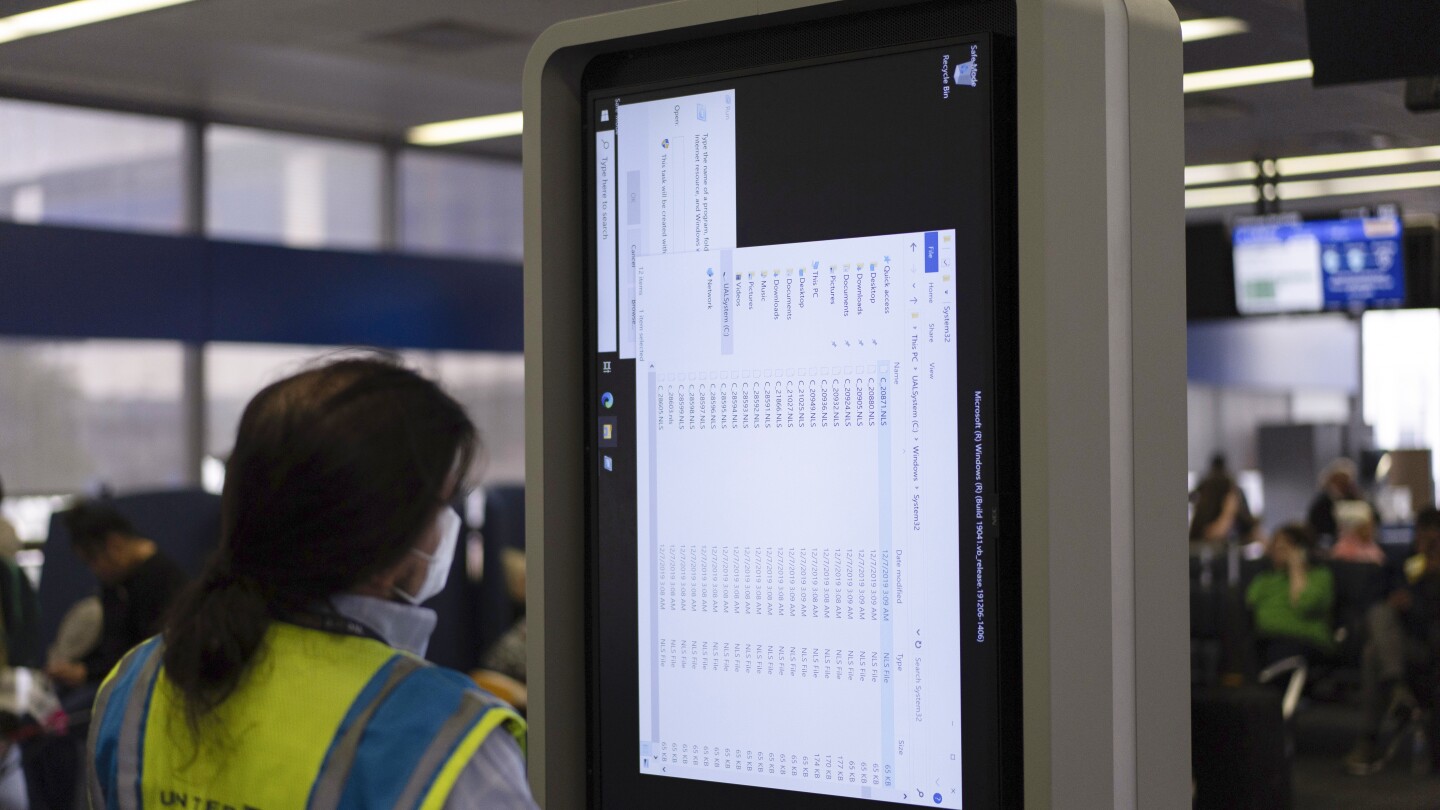Business
Why Was Sam Altman Fired? Possible Ties to China D2 (Double Dragon) Data from Hackers
Published
8 months agoon

Theories are going around the internet why Sam Altman was fired. On an insider tech forum (Blind) – one person claims to know by third-hand account and how this news will trickle into the media over the next couple of weeks.
It’s said OpenAI had been using data from D2 to train its AI models, which includes GPT-4. This data was obtained through a hidden business contract with a D2 shell company called Whitefly, which was based in Singapore. This D2 group has the largest and biggest crawling/indexing/scanning capacity in the world 10x more than Alphabet Inc (Google), hence the deal so Open AI could get their hands on vast quantities of data for training after exhausting their other options.
The Chinese government became aware of this arrangement and raised concerns with the Biden administration. As a result, the NSA launched an investigation, which confirmed that OpenAI had been using data from D2. Satya Nadella, the CEO of Microsoft, which is a major investor in OpenAI, was informed of the findings and ordered Altman’s removal.
There was also suggestion that Altman refused to disclose this information to the OpenAI board. This lack of candor ultimately led to his dismissal and is what the board publicly alluded to when they said “not consistently candid in his communications with the board.”
To summarize what happened with Sam Altman’s firing:
1. Sam Altman was removed from OpenAI due to his ties to a Chinese cyber army group.
2.OpenAI had been using data from D2 to train its AI models.
3. The Chinese government raised concerns about this arrangement with the Biden administration.
4. The NSA launched an investigation, which confirmed OpenAI’s use of D2 data.
5. Satya Nadella ordered Altman’s removal after being informed of the findings.
6. Altman refused to disclose this information to the OpenAI board.
We’ll see in the next couple of weeks if this story holds up or not.

Business
Worldwide IT outage: Airlines rush to get back on track
Published
7 days agoon
July 20, 2024
Transport providers, businesses and governments on Saturday are rushing to get all their systems back online after long disruptions following a widespread technology outage.
The biggest continuing effect has been on air travel. Carriers canceled thousands of flights on Friday and now have many of their planes and crews in the wrong place, while airports facing continued problems with checking in and security.
At the heart of the massive disruption is CrowdStrike, a cybersecurity firm that provides software to scores of companies worldwide. The company says the problem occurred when it deployed a faulty update to computers running Microsoft Windows, noting that the issue behind the outage was not a security incident or cyberattack.
Here’s the Latest:
Microsoft: 8.5 million devices on its Windows system were affected
Microsoft says 8.5 million devices running its Windows operating system were affected by a faulty cybersecurity update Friday that led to worldwide disruptions.
A Saturday blog post from Microsoft was the first estimate of the scope of the disruptions caused by cybersecurity firm CrowdStrike’s software update.
“We currently estimate that CrowdStrike’s update affected 8.5 million Windows devices, or less than one percent of all Windows machines,” said the blog post from Microsoft cybersecurity executive David Weston.
“While the percentage was small, the broad economic and societal impacts reflect the use of CrowdStrike by enterprises that run many critical services.”
Weston said such a significant disturbance is rare but “demonstrates the interconnected nature of our broad ecosystem.” Windows is the dominant operating system for personal computers around the world.
Austrian doctors’ group calls for better data protection for patients
In Austria, a leading doctors organization said the global IT outage exposed the vulnerability of health systems reliant on digital systems.
“Yesterday’s incidents underscore how important it is for hospitals to have analogue backups” to safeguard patient care, Harald Mayer, vice president of the Austrian Chamber of Doctors, said in a statement on the organization’s website.
The organization called on governments to impose high standards in patient data protection and security and on health providers to train staff and put systems in place to manage crises.
“Happily, where there were problems, these were kept small and short-lived and many areas of care were unaffected” in Austria, Mayer said.
Germany warns of scams after major IT outage
BERLIN — The German government’s IT security agency says numerous companies are still struggling with the consequences of a far-reaching technology outage.
“Many business processes and procedures have been disturbed by the breakdown of computer systems,” the BSI agency said on its website.
But the agency also said Saturday that many impacted areas have returned to normal.
It warned that cybercriminals were trying to take advantage of the situation through phishing, fake websites and other scams and that “unofficial” software code was in circulation.
The agency said it was not yet clear how faulty code ended up in the CrowdStrike software update blamed for triggering the outage.
European airports appear to be close to normal
LONDON — Europe’s busiest airport, Heathrow, said it is busy but operating normally on Saturday. The airport said in a statement that “all systems are back up and running and passengers are getting on with their journeys smoothly.“
Some 167 flights scheduled to depart from U.K. airports on Friday were canceled, while 171 flights due to land were axed.
Meanwhile, flights at Berlin Airport were departing on or close to schedule, German news agency dpa reported, citing an airport spokesman.
Nineteen flights took off in the early hours of Saturday after authorities exempted them from the usual ban on night flights.
On Friday, 150 of the 552 scheduled inbound and outbound flights at the airport were canceled over the IT outage, disrupting the plans of thousands of passengers at the start of the summer vacation season in the German capital.
German hospital slowly restoring its systems after widespread cancellations
BERLIN — The Schleswig-Holstein University Hospital in northern Germany, which on Friday canceled all elective surgery because of the global IT outage, said Saturday that it was gradually restoring its systems.
In a statement on its website, it forecast that operations at its two branches in Kiel and Luebeck would return to normal by Monday and that “elective surgery can take place as planned and our ambulances can return to service.”
Britain’s transport system still trying to get back on track
LONDON — Britain’s travel and transport industries are struggling to get back on schedule after the global security outage with airline passengers facing cancellations and delays on the first day of summer holidays for many school pupils.
Gatwick Airport said “a majority” of scheduled flights were expected to take off. Manchester Airport said passengers were being checked in manually and there could be last-minute cancellations.
The Port of Dover said it was seeing an influx of displaced air passengers, with hourlong waits to enter the port to catch ferries to France.
Meanwhile, Britain’s National Cyber Security Center warned people and businesses to be on the lookout for phishing attempts as “opportunistic malicious actors” try to take advantage of the outage.
The National Cyber Security Center’s former head, Ciaran Martin, said the worst of the crisis was over, “because the nature of the crisis is that it went very wrong very quickly. It was spotted quite quickly and essentially it was turned off.”
He told Sky News that some businesses would be able to get back to normal very quickly, but for sectors such as aviation it would take longer.
“If you’re in aviation, you’ve got people, planes and staffs all stranded in the wrong place… So we are looking at days. I’d be surprised if we’re looking at weeks.”
Germany airline expects most of its flights to run normally
BERLIN — Eurowings, a budget subsidiary of Lufthansa, said it expected to return to “largely scheduled” flight operations on Saturday.
On Friday, the global IT outage had forced the airline to cancel about 20% of its flights, mostly on domestic routes. Passengers were asked to take trains instead.
“Online check-in, check-in at the airport, boarding processes, booking and rebooking flights are all possible again,” the airline said Saturday on X. “However, due to the considerable extent of the global IT disruption there may still be isolated disruptions” for passengers, it said.
Delta Air Lines and its regional affiliates have canceled hundreds of flights
DALLAS — Delta Air Lines and its regional affiliates canceled more than a quarter of their schedule on the East Coast by midafternoon Friday, aviation data provider Cirium said.
More than 1,100 flights for Delta and its affiliates have been canceled.
United and United Express had canceled more than 500 flights, or 12% of their schedule, and American Airlines’ network had canceled 450 flights, 7.5% of its schedule.
Southwest and Alaska do not use the CrowdStrike software that led to the global internet outages and had canceled fewer than a half-dozen flights each.
Portland, Oregon, mayor declares an emergency over the outage
PORTLAND, Ore. — Mayor Ted Wheeler declared an emergency Friday after more than half of the city’s computer systems were affected by the global internet outage.
Wheeler said during a news conference that while emergency services calls weren’t interrupted, dispatchers were having to manually track 911 calls with pen and paper for a few hours. He said 266 of the city’s 487 computer systems were affected.
Border crossings into the US are delayed
SAN DIEGO — People seeking to enter the U.S. from both the north and the south found that the border crossings were delayed by the internet outage.
The San Ysidro Port of Entry was gridlocked Friday morning with pedestrians waiting three hours to cross, according to the San Diego Union-Tribune.
Even cars with people approved for a U.S. Customers and Border Protection “Trusted Traveler” program for low-risk passengers waited up to 90 minutes. The program, known as SENTRI, moves passengers more quickly through customs and passport control if they make an appointment for an interview and submit to a background check to travel through customs and passport control more quickly when they arrive in the U.S.
Meanwhile, at the U.S.-Canada border, Windsor Police reported long delays at the crossings at the Ambassador Bridge and the Detroit-Windsor tunnel.
Latest
More Americans apply for jobless benefits as layoffs settle at higher levels in recent weeks
Published
1 week agoon
July 18, 2024
U.S. filings for unemployment benefits rose again last week and appear to be settling consistently at a slightly higher though still healthy level that the Federal Reserve has been aiming for.
Jobless claims for the week ending July 13 rose by 20,000 to 243,000 from 223,000 the previous week, the Labor Department reported Thursday. It’s the eighth straight week claims came in above 220,000. Before that stretch, claims had been below that number in all but three weeks so far in 2024.
Weekly unemployment claims are widely considered as representative of layoffs.
The Federal Reserve raised its benchmark borrowing rate 11 times beginning in March of 2022 in an attempt to extinguish the four-decade high inflation that shook the economy after it rebounded from the COVID-19 recession of 2020. The Fed’s intention was to cool off a red-hot labor market and slow wage growth, which it says can fuel inflation.
AP AUDIO: More Americans apply for jobless benefits as layoffs settle at higher levels in recent weeks
AP correspondent Shelley Adler reports filings for unemployment benefits have risen.
“The Fed asked to see more evidence of a cooling economy, and for the most part, they’ve gotten it,” said Chris Larkin, managing director of trading and investing at E-Trade. “Add today’s weekly jobless claims to the list of rate-cut-friendly data points.”
Few analysts expect the Fed to cut rates at its meeting later this month, however most are betting on a cut in September.
The total number of Americans collecting unemployment benefits rose after declining last week for the first time in 10 weeks. About 1.87 million Americans were collecting jobless benefits for the week of July 6, around 20,000 more than the previous week. That’s the most since November of 2021.
Continuing claims have been on the rise in recent months, suggesting that some Americans receiving unemployment benefits are finding it more challenging to land jobs.
And there have been job cuts in a range of sectors in recent months, from the agricultural manufacturer Deere, to media outlets like CNN, and elsewhere.
The four-week average of claims, which evens out some of the week-to-week volatility, rose by 1,000 to 234,750.
Strong consumer demand and a resilient labor market has helped to avert a recession that many economists forecast during the extended flurry of rate hikes. As inflation continues to ease, the Fed’s goal of a soft-landing — bringing down inflation without causing a recession and mass layoffs — appears within reach.
While the labor market remains historically healthy, recent government data suggest some weakening.
The unemployment rate ticked up to 4.1% in June, despite the fact that America’s employers added 206,000 jobs.
Job postings in May rose slightly to 8.1 million, however, April’s figure was revised lower to 7.9 million, the first reading below 8 million since February 2021.
Austin Local News
Darden Restaurants buys Tex-Mex chain Chuy’s for $605 million
Published
1 week agoon
July 17, 2024
Darden Restaurants is adding Tex-Mex to the menu.
The parent company of Olive Garden, LongHorn Steakhouse, Yard House and other chains, said Wednesday it’s buying Chuy’s for approximately $605 million.
Darden said it will acquire all outstanding shares of Chuy’s for $37.50 per share. Those shares closed at $25.27 apiece on Wednesday, then soared past $37 in after-hours trading once the deal was announced. Darden shares fell 1% in after-hours trading.
Darden said the boards of Darden and Chuy’s have unanimously approved the acquisition. The deal is expected to close later this year, if it’s approved by Chuy’s shareholders.
Chuy’s Holdings Inc. was founded in Austin, Texas, in 1982. It now operates 101 restaurants in 15 states and has 7,400 employees. It’s known for its eclectic decor and fresh food, including handmade tortillas and sauces.
Like Darden, Chuy’s owns and operates all of its restaurants. Darden President and CEO Rick Cardenas said Chuy’s is a differentiated brand with strong growth potential that will expand Darden’s dining options.
Darden, based in Orlando, Florida, operates more than 1,900 restaurants and has 190,000 employees. It also owns Ruth’s Chris Steak House, Cheddar’s Scratch Kitchen, The Capital Grille, Seasons 52, Eddie V’s and Bahama Breeze.
“Based on our criteria for adding a brand to the Darden portfolio, we believe Chuy’s is an excellent fit that supports our winning strategy,” Cardenas said in a statement.
Chuy’s Chairman, CEO and President Steven Hislop said the acquisition will accelerate Chuy’s business goals and expand the brand to more communities.
The deal comes as both restaurant companies have been struggling with a downturn in customer traffic due to consumer concerns about inflation.
In Darden’s fiscal fourth quarter, which ended May 26, same-store sales — or sales at restaurants open at least a year — were flat compared to the prior year. Chuy’s same-store sales were down 5% in its first quarter, which ended March 31.
Investment bank Jefferies downgraded shares for both restaurant chains earlier this month, saying they’re being squeezed by price promotions at fast-food chains like McDonald’s as well as at casual dining peers like Chili’s and Applebee’s.







